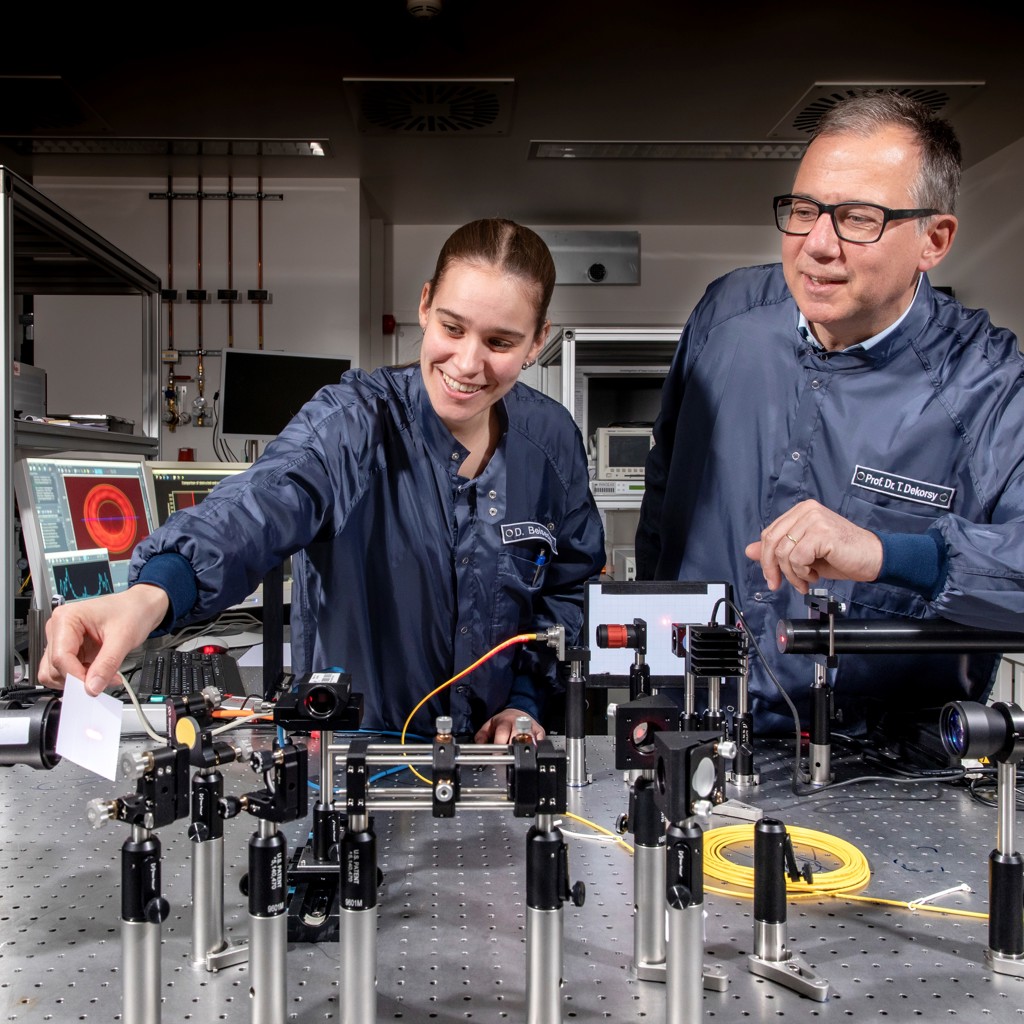Thomas Dekorsy
German Aerospace CenterFor groundbreaking achievements in the fields of high-speed asynchronous optical sampling and highly efficient terahertz emitters, as well as for spectroscopy of coherent acoustic and optical phonons in a wide range of materials.

Thomas Dekorsy is working to tackle the 1 million pieces of space debris that threaten active satellites, most of which are only one centimeter in size. Sounds like a daunting task, but Thomas talks about his work with excitement and optimism. As Director of the Institute of Technical Physics at the German Aerospace Center, Thomas understands the huge potential for danger and success when dealing with space debris. “We develop technologies for laser ranging and tracking [of] space debris, so you can detect and get very exact trajectories…which is important to making collision avoidance with satellites.” He has even bigger goals with this technology in a decade or two. “In the long term…space debris mitigation is very important. That’s something where we develop concepts for laser-based space debris mitigation…a way to manipulate the space particles is to slow them down and change trajectories,” which allows them to burn up naturally in our atmosphere. This work is extremely important if we want to maintain our reliance on satellites and satellite-based services for communication, navigation, weather forecast, and earth observation.
He has only been involved with this project for the last four years. Previously, he had a long career working in laser spectroscopy and other fields in optics and photonics. It all started with an interest in naturally occurring optical effects like rainbows, solar eclipse, etc. This interest drew him to science, and some of his favorite subjects in high school were math and physics. He was motivated to explore science further due to rather “unfortunate” circumstance with his high school teachers. He remembers, “At the time, there were not enough science teachers…but we had a huge scientific center next to our school…and so the scientists from the research center were forced to be our teachers in our school. … I always got the impression there was something very special about these scientists beyond what they were teaching us. They are so motivated in what they are doing. That really inspired me to look more into science.”
Despite an early motivation, he did not really plan to have a career in science. It wasn’t until his diploma thesis work that he decided to devote his life to physics. The dedication was thanks to work with femtosecond lasers: “When I started to watch atoms moving…I was so fascinated that I wanted to stay in this field.” Thomas was drawn to using lasers to do time-resolved spectroscopy and to observe new effects like coherent phonons. The final event that encouraged Thomas to make physics his career took place at an OSA conference. He had the opportunity to attend the Ultrafast Phenomena conference and present his thesis. There, he got feedback from all kinds of people, including Nobel laureates. This connection to the whole range of career scientists was something that inspired him in a whole new way.
Today, a favorite part of his job is interacting with young people and working with students. Over the years, Thomas has transitioned from teaching physicists to students in aerospace engineering at Stuttgart University. He loves to give lectures on lasers and optoelectronics, and he finds it “fascinating to teach them what can be done with lasers in the future, which today still done by other means.” His advice to them and to anyone starting a scientific career is to go into a field that you find the most fascinating. “I think being highly motivated, for what you are doing is the most important thing which will bring you forward.” He stresses that motivation and interest are the two factors that can ensure a fulfilling career in science. His last piece of advice speaks to a wider audience, though: “At the end, it’s your career and it’s something like working on your hobby when you’re doing work on the things you find most fascinating.” When you are able to make your life doing the thing you are most interested in, work becomes fun.
Photo Credit: © DLR/Eppler
Profile written by Samantha Hornback
